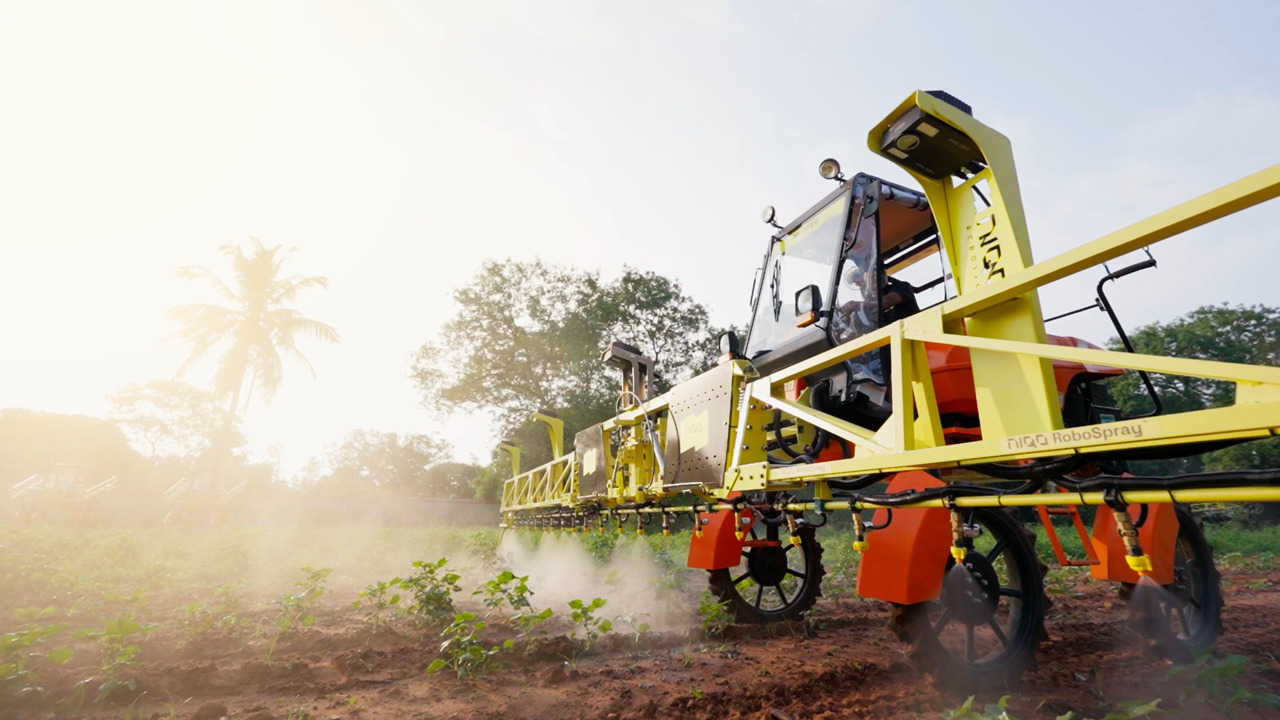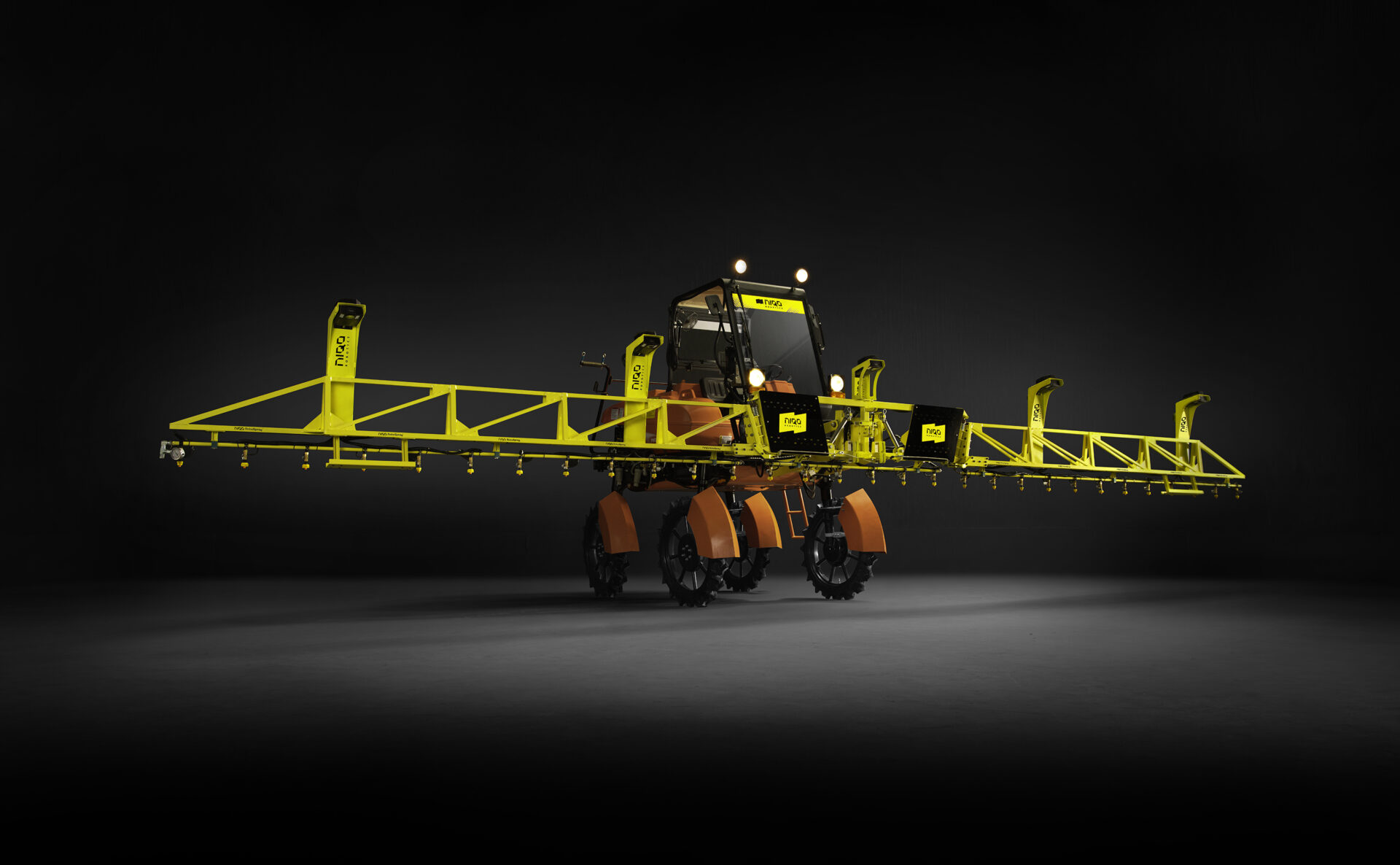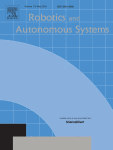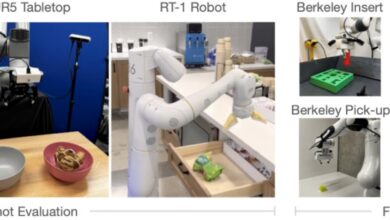Niqo Robotics aims to help smallholders lead in AI farming

- Bangalore, India-based Niqo Robotics has closed a $13 million (Rs 109 crore) Series B for its AI-powered spot-spraying technology that integrates with existing agricultural equipment.
- Bidra Innovation Ventures led the round, which brings Niqo’s total funding to $21 million. The round also saw significant investments from new investor Fulcrum Global Capital and existing investor Omnivore.
- Series B funding will go towards expansion across India and into other parts of the world.

‘Bubble-up’ vs. ‘trickle-down’ innovation
Niqo Sense, the company’s “proprietary AI agriculture camera,” can be retrofitted to work with existing farm equipment such as sprayers, using deep learning models and computer vision to target-spray plants.
Niqo says it commercialized over 90,000 acres in 2023–2024 and demonstrated “real-time chemical savings of up to 60%,” benefitting more than 1,800 farmers.
The company says its name is derived from the Green word “mikolaos,” meaning “victory of the people” — an apt name, given Niqo’s main mission.
“A lot of technology is assumed to be trickle down,” Niqo founder Jaisimha Rao tells AgFunderNews. “It gets built for some of the developed markets and then small farm holders benefit from that market innovation.”
In ag robotics, that’s frequently the case. A report last year from Western Growers found that automation and robotics is “not a big spend” for large farming operations but completely unrealistic for smaller ones. The same report suggested the latter group is critical to the overall growth of the sector.
Niqo addresses this by specifically focusing on smallholder farmers in India. This group — of which there are more than 150 million — typically farms between four and eight acres.
“What we’re trying to say is, Can technology actually bubble up? Can smallholders lead this innovation curve that we are doing for spot spraying? We want to put our Niqo flag [in the ground, so to speak] and say this technology was used in India last season and [someone in] the Netherlands is benefitting from that,” says Rao.
The idea attracted investors from all over the world for the Series B, including Bidra Innovation, which led the round, and India-based VC Omnivore
“At Omnivore, we believe global agri-food systems increasingly need climate-smart deep tech solutions,” Omnivore managing partner Mark Kahn tells AgFunderNews. “Our continued investment in Niqo underlines our vision that farm robotics can optimize resources and meaningfully increase farmer profits.”

The eyes, brains and hands of agriculture
Rao started Niqo (previously called TartanSense) back in 2015 after years at investment firm BlackRock. An engineer by training, he says AI has evolved over the years from being “deterministic” (e.g., code saying, “this is what leaf looks like, with this much green and this structure”) to probabilistic (you train the algorithm on what 1,000 different leaves look like).
“The ChatGPT moment that has happened with text has not happened with computer vision yet,” he says. “There is no single amazing model that, for example, recognizes what different plants are, diseases, etc. to a high degree. When that comes, it will be a monumental shift to our business.”
Making a human analogy, Rao says Niqo’s robots are built with “eyes,” “brains” and “hands.”
“The eyes are the camera, the brains [are the] the AI compute, and the hands can do a bunch of things: you can pluck, you can spray, you can weed. If you look at the eyes, brains and hands analogy, the AI specifically sits in the brain vertical.”
Niqo feeds data collected over the last nine years into its algorithms to continually refine the Niqo Sense. While that aspect happens in the cloud, the cameras are engineered to run on the edge when affixed to a tractor, which is key for operating in some rural settings.
To India and beyond
For now, Niqo is mainly focused on the Indian agriculture market, where it will use the Series B funding to expand.
“Where we really shine as a technology is when we need to go slower but be more precise,” explains Rao. “If you suddenly want to spray at 20 miles per hour without technology, there are other better technologies out there. But if you want millimeter-level position, and you can go slower, that’s where we shine.”
Farmers’ landholdings in India are small, he adds, so growers don’t need to move as fast as they perhaps would in, say, Salinas Valley. “They can afford to be slower in speed but still super precise.”
Niqo’s technology is agnostic in terms of what it sprays. However, the greatest need for India right now is pesticides, says Rao.
“There is a use case for spot-spraying beyond herbicides. Almost all spraying of any kind is done manually — a human being with a knapsack who goes around and sprays by hand. Clearly that’s terrible for the knapsack sprayer from a human life point of view, as well as from the farmer point of view. [Farmers] don’t know what dosage is getting sprayed and whether all the chemicals are getting applied uniformly throughout the field.”
Series B funding will also help Niqo expand into horticulture markets around the world. At the moment, the company is working in the US with growers in Salinas and Yuma, Arizona.
“A lot of these farmers don’t get enough love from Big Ag because the markets are relatively small,” Rao says of horticulture growers in the US.
“We’re also looking at Australia in the vegetable market. As our lead investor is the corporate arm for the OCP group based in Morocco, there is a synergy between India technology going to Africa.”



